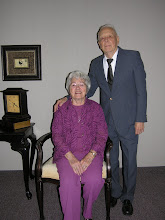
A bronze monument built 304/284 B.C. Collapsed during earthquate in 225 B.C. Weighed 250 tons and was 90-129ft. high.This Colosus was one of the seven wonders of the world. Grand Palace
Grand Palace
 Gate of Wall to City
Gate of Wall to City
 The walled town of Rhodes
The walled town of Rhodes
 Grand Palace
Grand Palace Gate of Wall to City
Gate of Wall to City The walled town of Rhodes
The walled town of RhodesRhodes with its walled town is Greece's biggest & most cosmopolitan resort. The town of Lindos can be reached on foot or by donkey and from here there is a breathtaking view of the Pelagos and of St. Paul's Bay, where the apostle dropped anchor on his way to Ephessos, Turkey(then Asia Minor). The Grand Master's Palace and fortifications are still in good repair and are some of the most interesting sights to be seen on the island.
Rhodes tradition held in Lindos on the southeast coast of the island, has the Apostle Paul's ship arrive at the island in the small harbor and stay in their city and preached, bringing many people into the new faith. (Acts 6:5)
















































